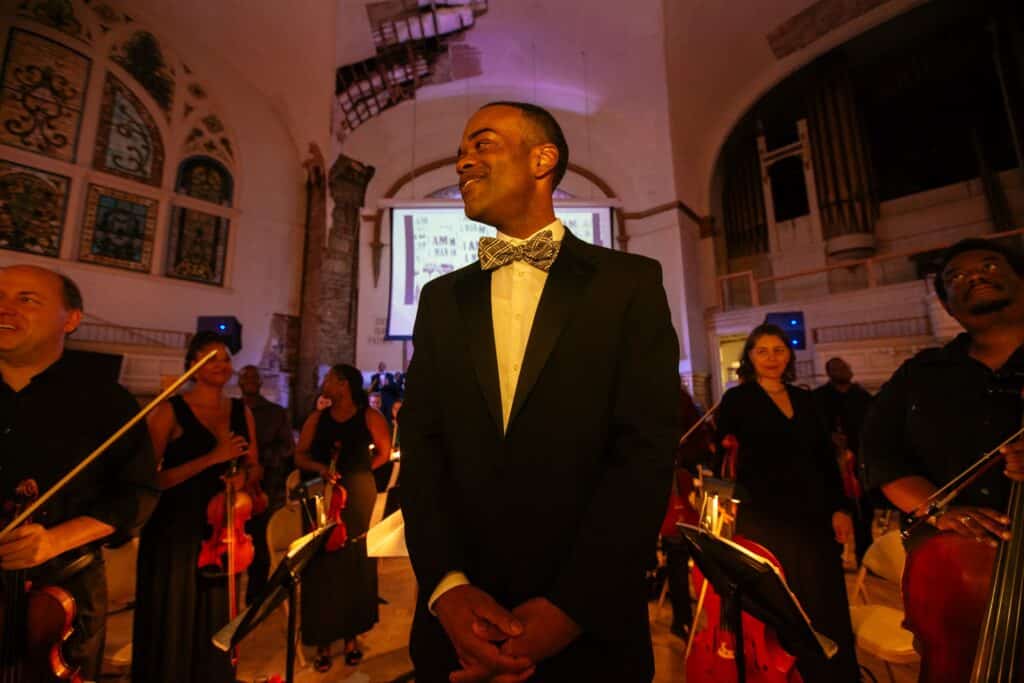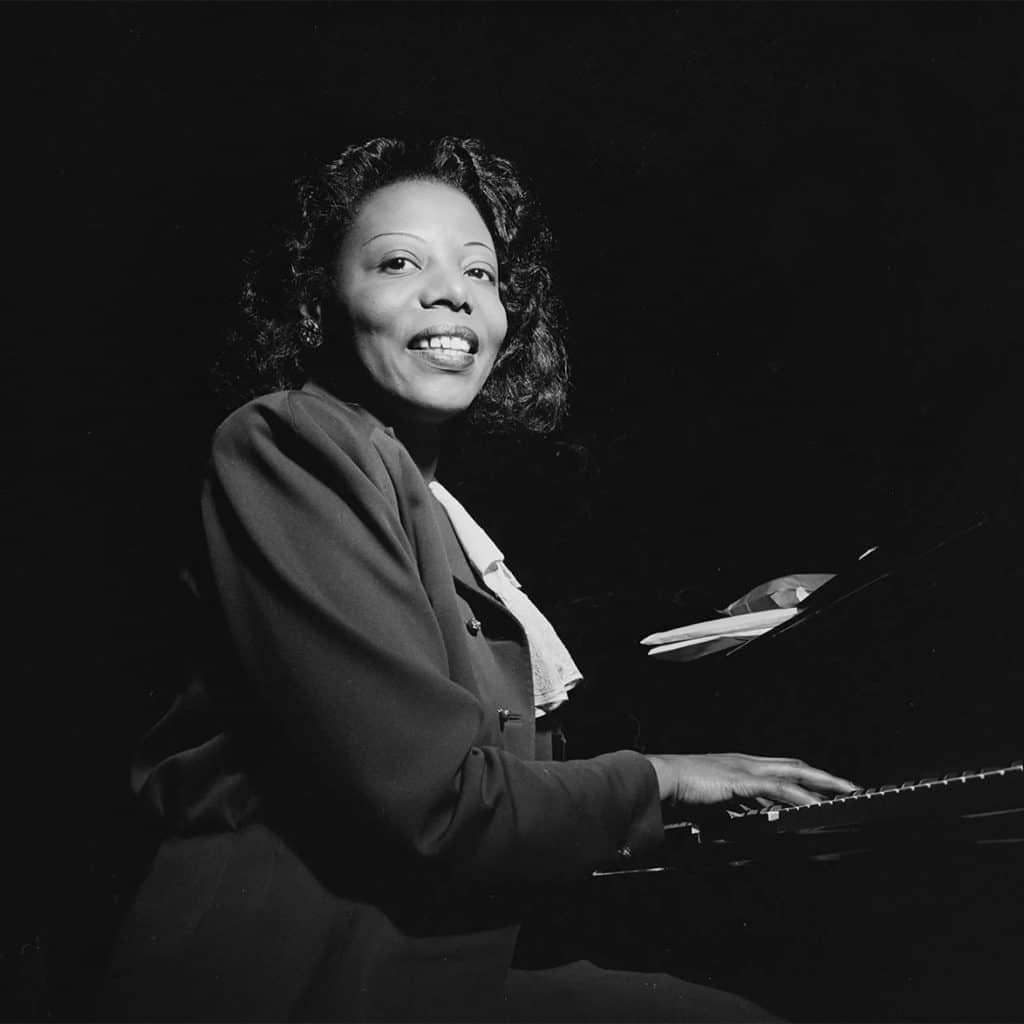The Dangers of Returning to a Monochromatic Arts World
As seasons and tours resume, artist and educator Rod Vester urges organizations and ensembles not to abandon their commitments to racial justice.

Belonging is a powerful social motivation and basic necessity for humanity. From birth, our interactions and engagements with others form a major part of our healthy development. Our reliance on the support of our parents and guardians, along with that of peers and other group members, shapes who we are. These microsystems—encompassing family, peers, and other influential groups, whether intact or damaged—are also responsible for the sophisticated skills, behaviors, traits, norms, and cognitive abilities that we possess as adults. Belonging promotes a sense of meaningfulness, predicts perceived value, and fosters healthy psychological functioning, inclusive of a number of variables.
When exclusion is practiced, on the other hand, individuals and communities experience the opposite: psycho-social anguish and emotional distress. Understanding the extreme importance and psychological necessity of belonging, why have orchestras, ensembles, arts organizations, and institutions excluded people of color throughout their history? For an industry that thrives on innovation and touts creativity, it has remained stagnant in many ways. We now have an extraordinary opportunity to diversify spaces and repertoire and to commit to building systems that welcome, embrace, respect, empower, and promote people of color. If we return to a monochromatic arts world and musical landscape, we will risk becoming an extinct industry.
Fraught with endless, glaring examples of structural inequities, normalcy has morphed into a new reality. No one knows what new discoveries await a post-pandemic world. The widely publicized killings of Black Americans will forever be seared into our minds. As the re-humanization of an oppressed people continues, we, within the arts, must take part in this fight for justice and equality. Throughout this article, I will bring forward perspectives, concepts, and ideas for your consideration. As you read this, please place your cognitive evaluation tools to the side. Approach this reading with an open mind and a willingness to hear hard truths. If you decide to discuss this article among your social circles, pause for a brief assessment and realignment. Social circles are essential and provide various forms of support. However, a reality check is imperative as we examine diversity and inclusion as a way of being rather than a performative practice. In many ways, our social circles—the people we choose to surround ourselves with—may produce and reproduce racism. Now is the time to turn to other cultures to build new individual and community connections.
Dear friends: your blinders have been lifted and now that you have seen the light, you have a greater responsibility to ensure that racism and spaces devoid of people of color do not remain. You are all responsible for the knowledge you gain and must become excellent stewards of that knowledge. When you know better, you should do and be better. No longer can you say “I didn’t know” when asked about the racial injustices of our world. The Covid-19 pandemic has unearthed and cast a bright light on the social and economic disparities that have plagued people of color for centuries. Not to anyone’s surprise, these disparities have existed in our organizations, institutions, and orchestras for centuries as well. If you allow these social and economic disparities to remain in your organization, institution, ensemble, or orchestra, you become an accessory to these social crimes against people of color. Your silence fosters complicity and your inaction will make you equally blameworthy for the continued oppression of people of color. In case you are still stuck on “what should I do?”, let me provide some details.
Your first order of business is to look in the mirror. The necessary social change and deconstruction begins with you. Wrestling with the many inequalities and ills of our industry is a complex feat riddled with difficult questions and compounded answers. However, these conversations and subsequent deep dives into systemic inequities must begin with you. You must interrogate your mind, heart, and soul. If you fail to look in the mirror and identify, unpack, and dismantle the ways in which your behaviors have perpetuated (and perhaps continue to perpetuate) systemic oppression and white supremacy, you can never truly enter this work with openness and a sense of surrender. Your revived and liberated self is crucial to push forward the social change needed in our industry.
People of color have long been surrounded, stifled, and constrained by spurious individuals. These counterfeit individuals are free to return home. They are not needed during this onward march to diversity, equity, and inclusion in the arts. Performative allyship, the superficial claim of solidarity without meaningful action, is highly discouraged, while true advocates are sorely needed. Required are those active coalitions that will work closely with others to empower the most vulnerable. Make no mistake, this model of advocacy should not be fueled by a savior or messiah complex. Diversity, equity, and inclusion work requires both hard and heart work. It is your responsibility to do the work. Educate yourself through the varied resources now available.
After you leave the mirror, pick up a microscope and investigate your ensemble, orchestra, organization, and/or institution. Examine its culture, values, behaviors, and actions. The key to success is an organizational culture based on a strongly held and widely shared belief that diversity, equity, inclusion, and belonging are both indispensable and a priority. This shared belief must then be supported by strategy, structure, and financial resources. Incorporate the necessary diversity and anti-racism training needed to create an environment that celebrate—and not merely tolerates—differences. Without this preparation, you will bring people of color into an oppressive environment that will do more harm than good. The mental toll this produces in people of color is real. As you examine policies and hiring practices that erect barriers for people of color, also look at what decorates the halls of your buildings. What paintings and photos are there? Since you are now correcting behaviors and fostering a space that welcomes all people, consider redecorating. Pictures are worth a thousand words, right? Always remember that you cannot not communicate.
What about repertoire? The short answer is a word that many have forgotten: coexistence. Adding music by people of color to your programming does not mean eliminating music by the white composers you have been performing forever. However, it is important to note that simply adding composers of color to your repertoire with no real inner work and understanding around diversity, equality, equity, and inclusion does a disservice to you and everyone else. When you present music by composers of color, you must do so with integrity, research, knowledge, empathy, and authenticity. By research, I mean that you should not simply copy other orchestras and perform only works by Florence Price, William Grant Still, George Walker, Samuel Coleridge Taylor, and George Bridgetower. There are many other amazing composers of color. As you begin to program live music again, please avoid performing music by composers of color only during Black History Month, Indigenous Peoples Day, Hispanic Heritage Month, Women’s Month, and Martin Luther King Jr. Day. This is unacceptable and a slap in the face to every person of color. Yes, I am taking the liberty, just this one time, to speak for all of us. Stop it!
Let us now look to building a racially and ethnically diverse community and audience. Organizations often mistakenly think that they must enlist a person of color to infiltrate non-white communities. This is not true. If one is not of a certain community, no matter the race, this individual is considered an outsider. However, anyone can graduate from outsider to insider. How? You must get on the ground, enter these communities, and build relationships with the people you desire to see in your organization, social circle, and audience. Attend community activities and events. Invite community leaders and citizens to participate in your program building and processes. Have them help you review, analyze, assess, and evaluate. Help community citizens see themselves as key drivers and co-creators. Show a real interest, listen actively, and assume nothing. How beautiful would it be to walk into a concert hall and see a racially and ethnically diverse audience? How beautiful would it be for those audience members to look at the stage and see a racially and ethnically diverse group of performers? You now have the opportunity to see that this can and does happen. There are plenty of professional musicians of color to hire. There is an abundance of composers of color to commission. There is a wealth of arts administrators of color ready to take the reins. And there are thousands of potential audience members of color who are ready to fill our concert halls. Anything antithetical to this is a complete and utter fallacy.
If you choose to ignore diversity and inclusion within your repertoire, your organizations, and your institutions, you will squander your competitive stance in the world. You will stand idly by as the world moves forward without you. Your teams will under-perform and your connection to your local community will diminish and ultimately dissolve. All in all, nothing good will come out of you not becoming diverse and inclusive. Conversely, the benefits of a diverse, equitable, and inclusive environment are transformative. You will gain new perspectives, attract and retain the best talent, increase creativity and innovation, offer a broader and more adaptable range of programs, increase your financial viability, and boost your reputation.
As we prepare to return to a new normal, I beseech you to not return to an oppressive and monochromatic arts landscape where the voices of musicians, leaders, and composers of color are implicitly or explicitly omitted. I ask that you remember your solidarity statements. I ask that you re-visualize the protestors that took to the streets demanding an end to systemic racism. Returning to a white-powered organizational and musical status quo is dangerous, insensitive, and ill advised. Do not go back. Open your hearts, your minds, your policies, your hiring practices, your positions, your orchestra seats, and your doors to musicians, composers, and leaders of color.
Domestic diversity and immigration continue to create vibrancy by fostering integrated communities of cultures, races, ethnicities, and socio-economic statuses, among other pluralities. Refusing to recognize this reality and evolve will lead to you, your organization, and institution becoming irrelevant. Every person should use their voice, their power, and their influence to ensure that all people are treated equally. America should finally live out its stated ideal that all people are created equal.



